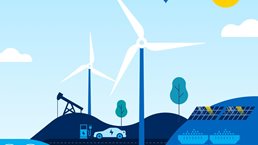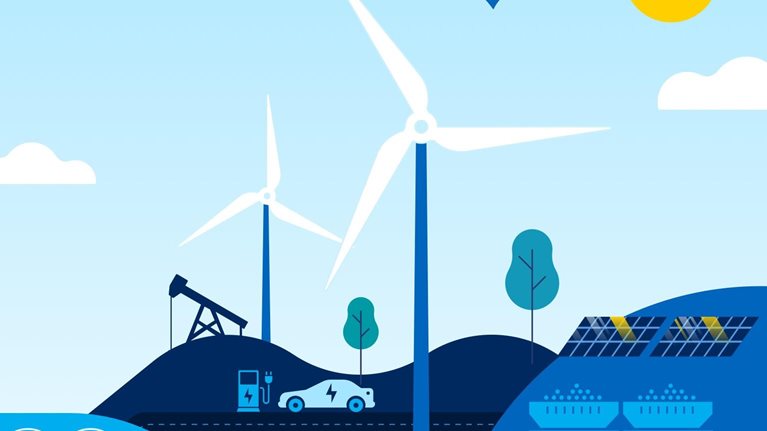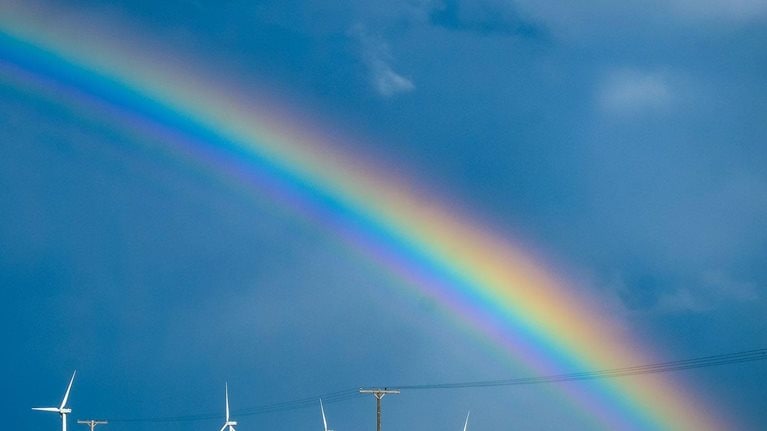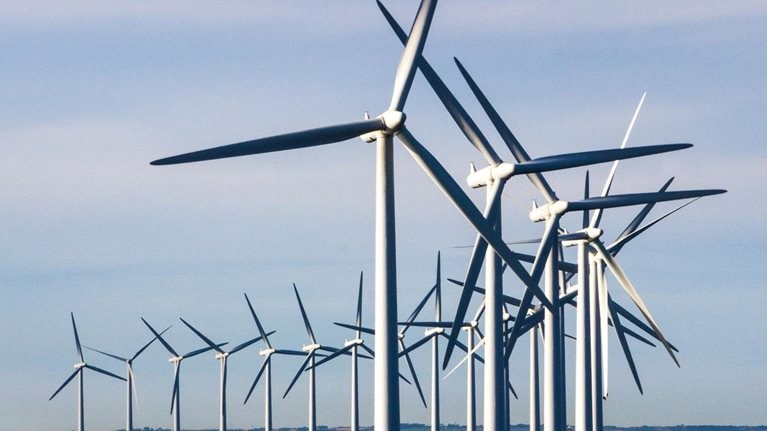States along the US East Coast have bold targets to deploy more than 10 GW of offshore wind (OSW) capacity by 2030. While behind industry development in Europe, which already has close to 19 GW installed and aims to have more than 60 GW by 2030, it is nonetheless a momentous development for the industry, especially considering the region’s potential.
The push for OSW in the region is part of a broader effort to increase the share of renewable energy in the power mix, displace fossil-based energy resources, and reduce emissions of greenhouse gases. For example, New York State has set a target of generating 50 percent of its energy from renewable energy sources and reducing greenhouse gas emissions by 40 percent by 2030, relative to 1990 levels. Similarly, Massachusetts pledged to cut its emissions by 80 percent by 2050.
OSW is likely to be an important component of the region’s future energy agenda. The US East Coast is one of the most promising regions for OSW. It consists of more than 1,200 miles of coastline, spanning from Maine to North Carolina, which boasts excellent offshore wind resources in proximity to areas of high demand for power. And the technical potential for OSW in the region is approximately five times the total in-state power demand1 (exhibit). By virtue of being offshore, OSW also experiences less NIMBYism—or the mentality of “not in my backyard”—than other onshore renewable or conventional power sources. In addition, scaling OSW to 10 GW by 2030 is a similar trajectory to that experienced during the early years of deployment in Europe, and the region can build on that experience.

This positive landscape has led states to embrace even more ambitious goals. New York State increased its target from 2.4 GW by 2030 to 9 GW by 2035, and other states are likely to follow suit. As a result, 10 GW is likely to quickly become the “floor” of OSW capacity in the region. With such commitments in place, it’s more important than ever for stakeholders to ensure that the region is equipped to deliver on the promise of OSW.
For this to happen, all the elements needed to scale the industry must be in place. And while some areas are on track, others present cause for concern. In this article, we assess the OSW industry’s ability to meet growth milestones along the US East Coast while continuing to reduce costs and enhance the competitiveness of OSW relative to incumbent sources of power.
The building blocks of the East Coast OSW industry at scale
Several building blocks underpin the timely and cost-effective scaling of OSW in the region to 10–20 GW by 2030–35. We have assessed the primary indicators of success for each building block to determine if and where there are reasons for concern. Based on this assessment, six building blocks require immediate mobilization to avoid future delays or cost increases. Areas of significant concerns include onshore grid infrastructure, vessels, and skilled labor, while offshore T&I, ports, and supply chains also raise some concerns.
1. Planning of OSW projects
Planning offshore wind projects includes the earliest stages of project development, which primarily consist of scouting and developing sites and raising capital. Overall, the building blocks in this category are on track.
Offshore site development
Suitable offshore sites need to be identified, assessed, characterized, and leased to developers before they can begin construction. Most sites are located on the outer continental shelf and require the extensive involvement of multiple stakeholders at both the federal and state levels.
Status: On track
Primary indicator: Total potential capacity under development
The Bureau of Ocean Energy Management (BOEM) identified more than 25 GW of wind energy lease areas suitable for OSW development and has expedited the auction of more than 19 GW to developers. For the most part, developers have accumulated significant experience conducting site development work in Europe and can leverage this experience in the Northeast region.
Project financing
OSW projects are capital intensive. For example, a 100-MW project typically requires investments of $300 million to $500 million before any revenue can be generated. These costs are compounded by the fact that investors have limited experience with OSW in the United States, resulting in higher perceived risks.
Status: On track
Primary indicator: Cost of financing relative to other capital-intensive projects
There is plenty of appetite among experienced international investors to invest in OSW projects in the United States. Long-term, 20-year power purchase agreements (PPAs) and Offshore Wind Renewable Energy Credits (ORECs) will also lower project risk and attract tax-equity investors. In addition, low US interest rates for debt financing of infrastructure projects are likely to attract investors.
2. Electric grid
One of the major challenges associated with OSW energy is how to safely and cost-effectively connect offshore projects to the onshore electric grid. This process entails building “wet” transmission and interconnections, reinforcing the onshore grid, and ensuring the grid has the built-in flexibility to safely accommodate a growing share of intermittent wind power. Overall, the building blocks included here present varying levels of concern, though one, grid flexibility, is on track.
Offshore transmission and interconnection (T&I)
Building wet transmission to connect OSW projects, including export cable and off- and onshore substations, typically represents 15 to 20 percent of project costs. In Europe, T&I is either shared across multiple projects in a networked configuration or, more commonly, built for individual projects in a radial configuration. Many developers possess the technical capabilities to build wet transmission. However, securing rights of way and interconnection can require complex permitting and approvals processes that involve multiple stakeholders, including independent systems operators, the Federal Energy Regulatory Commission (FERC), utilities, and environmental agencies.
Status: Some concerns
Primary indicator: States with clear interconnection plans
The main challenge for T&I is interconnecting projects to the onshore grid. This issue is particularly acute in densely populated regions, such as New York City and Long Island, where interconnection points are scarce. While most states in the region have conducted detailed studies of T&I challenges and options, such as using retiring fossil-fuel plants as interconnection locations, they have yet to confirm plans. Further complicating matters, offshore T&I may require $6 billion to $8 billion in capital investment to interconnect 10 GW of OSW, which will likely require lengthy negotiations and approvals to secure.
Would you like to learn more about our Electric Power & Natural Gas Practice?
Onshore grid infrastructure
Major upgrades are required to onshore transmission lines and substations to enable 10–20 GW of OSW—and they too can be costly. The nature and extent of these upgrades are dependent on where OSW projects are connected to the grid and how the characteristics of the local grid are affected. Under current regulations, OSW project developers are responsible for bearing these costs, which creates a substantial financing burden and increases risk.
Status: Significant concerns
Primary indicator: States with clear grid upgrade plans
While each state has unique characteristics and constraints, the high population density in many areas along the East Coast make grid upgrades challenging and costly. For example, New York’s Energy Highway Initiative estimates that adding 3.2 GW of renewables will require $5.7 billion in grid investment, and meeting 9 GW will significantly increase this number. Thus far, no onshore transmission system upgrade project designed to accommodate OSW has been approved or financed.
Grid flexibility
Wind power is an intermittent energy resource, requiring other flexible sources of power generation and storage—for example, peaking power plants (“peakers”) and batteries—to make up for potential shortfalls. As the penetration of OSW power increases, the technical challenges and costs of flexibility increase.
Status: On track
Primary indicator: Amount of flexible capacity available
Three states in the region have announced targets of more than 5 GW of storage capacity, which is likely to be more than enough to meet the flexibility needs of OSW projects on the bulk system. However, the locational value in addressing transmission bottlenecks could be high. At the same time, existing and new gas peakers being commissioned may find less demand for their power, particularly as states seek ways to reduce emissions. The role of such critical backup thermal plants with low utilization has yet to be fully fleshed out. Finally, the push toward further electrification in buildings aligns with OSW’s seasonal profile and will also create less strain on the grid.
3. Maritime infrastructure
The construction, installation, and maintenance of OSW projects will require dedicated ports and vessels. Both currently present concerns as to the timely scaling to support industry build-out.
Ports
OSW turbines stand approximately 600 feet tall today and will continue to grow as manufacturers introduce ever-larger models. For example, GE’s recently announced 12-MW turbine is expected to stand approximately 850 feet tall. Therefore, ports must be specifically designed to accommodate the partial assembly and shipping of large components, such as blades and towers. Ports also require significant laydown area—or the space needed for partial assembly of a turbine—wharf strength, good logistical connections, and reasonable maritime constraints, including harbor width and bridge height. Last, they must function as bases for maintenance and servicing, including technician crew transfers.
Status: Some concerns
Primary indicator: Number of ports with plans and funding secured
The US Department of Energy estimates that the United States will need at least four staging ports in the North Atlantic and one in the South Atlantic to support 10-GW growth by 2030. Currently, New Bedford Marine Commerce Terminal in New Bedford, Massachusetts, seems to be the only port capable of supporting OSW in the near term. Approximately four ports along the East Coast therefore must be identified, and plans and funding for eventual upgrades need to be secured. Some states have estimated the total necessary upgrades, and the investment is significant—for example, the port in New London, Connecticut, may require more than $100 million.
Vessels
Given the size of OSW turbine components, existing physical constraints, such as bridges and harbor configurations, as well as the challenges of assembly and installation at sea, the OSW industry requires dedicated construction and maintenance vessels. Furthermore, the US Jones Act mandates that vessels used to transport OSW turbine components from US ports to offshore sites must be manufactured and registered in the United States.
Status: Significant concerns
Primary indicator: Number of size-appropriate vessels built
Wind turbine installation vessels (WTIVs) are needed to install large turbines in deep waters. As the United States seeks to install turbines capable of deploying more than 8 MW, WTIVs are likely to be a key bottleneck. The earliest available WTIV is likely to arrive by 2021–22, which is beyond the required development timeline for the first set of OSW projects to be built. Furthermore, there is no evidence that there will be enough WTIVs to support the expected production pipeline. In fact, these vessels cost $100 million to $200 million and take at least two years to build, in addition to requiring fleets of service operation and crew transfer vessels. There are alternatives, however, such as barges or vessels that are not compliant with the Jones Act, but these options entail complexities that increase cost, time, and risk.
4. Economic inputs
The two primary economic inputs that underpin the build-out of OSW in the region are the establishment of robust local supply chains and the availability of a growing qualified labor force. While the industry is still in its early days, several signs raise concerns on both fronts.
Supply chains
Affordable, at-scale deployment of OSW requires the development of local supply chains. This is particularly critical given the size of some of the components involved, such as blades, towers, nacelles, and generators, which limits the ability to import components from afar. The United States has limited commercial history with OSW (less than 50 MW of OSW capacity is currently online) but can draw on the extensive experience accumulated with onshore wind across the Midwest and Texas as well as encourage the transfer of knowledge from European leaders.
Status: Some concerns
Primary indicator: Number of local plants for key components
Scaling OSW capacity in the region to 10 GW and achieving competitive levelized cost of electricity (LCOE) will require the localization of manufacturing—turbines alone can account for one-third of the total CAPEX—in the next three to four years, when construction on large-scale projects begins. Critical components will likely need to be manufactured locally while others may potentially be produced at existing US onshore wind-manufacturing facilities. It’s also feasible to import necessary parts from Europe, though that increases costs. The current cost to set up manufacturing facilities for blades or nacelles is estimated at $200 million to $300 million, based on recent projects from Europe. As of January 2019, no OSW manufacturing facilities are present, and only a few small-scale projects have been announced.

Global Energy Perspective 2019
Skilled labor
According to a recent study by Northeast Wind Resource Center, the regional OSW industry will need to employ more than 35,000 full-time employees to support 8 GW. This number is roughly equivalent to a quarter of the US labor force employed by the oil and gas industry. As the size of the OSW industry continues to grow toward 20 GW, the size of the labor pool must also increase with the bulk of OSW jobs in installation, maintenance, and repair. These jobs are typically in proximity to where projects are installed and require a highly skilled labor force. Preparing the labor force for OSW therefore calls for dedicated technical training programs in the region.
Status: Significant concerns
Primary indicator: Number of people with adequate training
The Massachusetts Clean Energy Center identified three main worker categories in short supply: skilled trade workers, operations and maintenance technicians, and water transportation workers. These three categories account for 50 percent of the workforce directly involved on a project site. Several initiatives have been announced to address the skills gap. For example, New York State committed $27 million for clean-energy workforce training, and Virginia announced $20 million to $30 million for a turbine-safety training facility. Significantly more resources will be needed to meet regional OSW labor needs and avoid costly shortages.
As the excitement around bold state government commitments to OSW dies down, the attention of industry stakeholders is quickly shifting toward the imperatives of industry build-out. And as the above assessment indicates, several areas of concern could lead to slowing down deployment or raising costs. Leaders in the industry will need to act swiftly—and often creatively—to address these concerns. Given the fragmentation of the East Coast regulatory landscape, collaboration among states may be an important component of the solution space, which is the topic of a forthcoming article that details the next steps.


